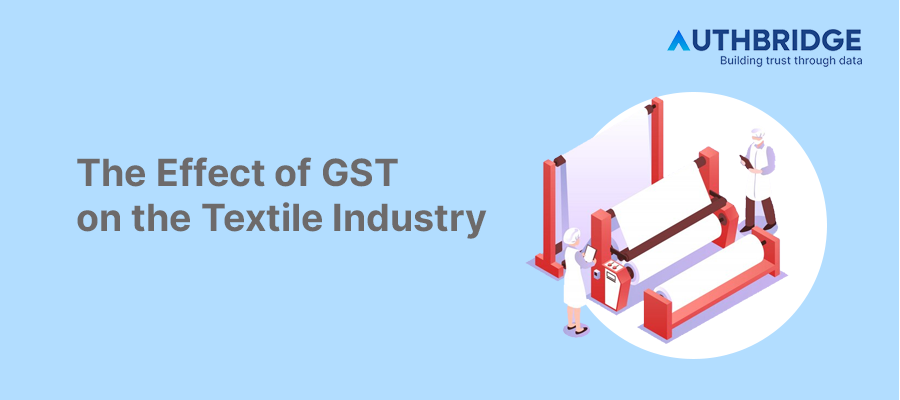Weaving The Impact Of GST On The Textile Industry

The textile industry, a significant contributor to India's GDP and employment, has experienced a transformative change with the introduction of the Goods and Services Tax (GST). This section provides an overview of the textile industry's landscape post-GST implementation and its objectives.
Overview of the Textile Industry in India
The Indian textile industry, characterized by its diversity from traditional handloom to modern textiles, plays a crucial role in the economy. It's a major sector for direct and indirect employment and a significant contributor to exports.
Implementation of GST and Its Objectives
GST was introduced to unify the complex tax structure, eliminate the cascading effect of taxes, and make Indian products globally competitive. For the textile industry, GST aimed to simplify tax compliance and promote growth by ensuring a uniform tax regime.
GST Rates for the Textile Industry
The GST council has specified rates for various textile products, impacting the cost structure and pricing strategies of businesses in this sector.
GST Rate Structure for Textile Products
GST rates for textile products vary, with most raw materials and essential items placed at lower rates to reduce the burden on the end consumer and manufacturers. The rates are designed to encourage compliance and ease of doing business.
Impact on Different Segments of the Textile Industry
The GST rates have had a differential impact across various segments of the textile industry, from yarn and fabric manufacturers to apparel and garment retailers. Understanding these rates is crucial for businesses to price their products competitively.
Input Tax Credit (ITC) in the Textile Sector
ITC is a critical component of GST that allows businesses to reduce their tax liability by claiming credit for the tax paid on inputs.
Understanding ITC for Textile Traders and Manufacturers
Textile traders and manufacturers can avail ITC on inputs and input services used in the production process. However, there are specific conditions and restrictions on the utilization of ITC in the textile sector.
Challenges in Availing ITC
Despite the availability of ITC, many textile businesses face challenges in availing it due to compliance issues, documentation requirements, and the gap in the credit chain, especially in the unorganized sector.
Compliance and Documentation Under GST
GST compliance is a critical aspect for textile businesses, involving registration, tax filing, and maintaining proper records.
GST Registration Process for Textile Businesses
All textile businesses exceeding the turnover threshold must register under GST. The registration process involves submitting relevant documents and information on the GST portal.
Monthly and Annual Compliance Requirements
Textile businesses are required to file monthly, quarterly, and annual returns, detailing their sales, purchases, tax liability, and ITC claimed. Compliance with these requirements is essential to avoid penalties and ensure smooth business operations.
Impact of GST on Textile Exports
GST has significant implications for textile exports, with provisions designed to boost international competitiveness and simplify the export process.
GST and Its Effect on Textile Exports
Exports are treated as zero-rated supplies under GST, allowing exporters to claim refunds on the tax paid on inputs. This provision aims to enhance the competitiveness of Indian textile products in the global market.
Refund Mechanism for Exporters
The GST framework provides a streamlined refund mechanism for exporters, facilitating quick reimbursement of taxes paid on inputs used in exported goods. This mechanism is crucial for maintaining cash flow and operational efficiency for exporters.
Challenges Faced by the Textile Industry Post-GST
The transition to GST has presented several challenges for the textile industry, particularly for small and medium enterprises and the unorganized sector.
Transition Challenges for Small and Medium Enterprises
Small and medium textile enterprises have faced difficulties in transitioning to the new tax regime, including understanding the new rates, compliance requirements, and availing ITC.
Compliance Burden on the Unorganized Sector
The unorganized sector, which forms a significant part of the textile industry, has struggled with the compliance burden under GST, impacting its competitiveness and sustainability.
Future Outlook and Recommendations
The textile industry's adaptation to GST is an ongoing process, with potential for further reforms and improvements in the tax framework.
Potential Policy Changes and Their Implications
Anticipated changes in GST policies could further simplify the tax regime for the textile industry, promoting growth and making Indian textiles more competitive globally.
Strategies for Textile Businesses to Navigate GST
Textile businesses can adopt strategies such as leveraging technology for compliance, staying updated on policy changes, and seeking professional advice to navigate the GST landscape effectively.
Category

Abhinandan Banerjee
(Associate Manager - Marketing)
Abhinandan is a dynamic Product and Content Marketer, boasting over seven years of experience in crafting impactful marketing strategies across diverse environments. Known for his strategic insights, he propels digital growth and boosts brand visibility by transforming complex ideas into compelling content that inspires action.



